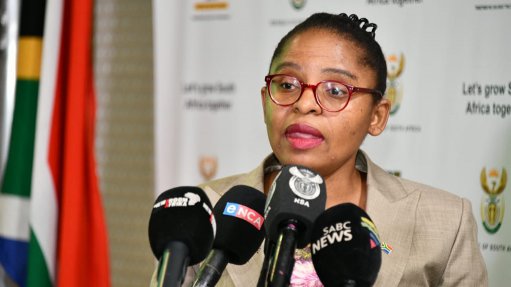
Minister in the Presidency Khumbudzo Ntshavheni
Cabinet was consulted on the updated Integrated Resource Plan (IRP) for electricity during its meeting on September 13, but the document will be further consulted and revised before it is released for public comment.
Minister in the Presidency Khumbudzo Ntshavheni stressed in her post-Cabinet briefing that the document would undergo various iterations and that consultations with the executive represented only the first part of that iterative process.
“So, it came to Cabinet through the relevant Cabinet committee … for the Ministers to make inputs and as the consultation continues and is concluded it will then be returned back to Cabinet for Cabinet to approve the consultation with the public,” she explained.
Ntshavheni denied that the intention had been for the document to be approved for public comment, as consultations with “other sectors” besides Cabinet would have to be undertaken ahead of its public release.
“When that phase is done, they will return back with a revised version, which will then be approved for public comment,” she said, without providing any specific timeframes.
In late August, Mineral Resources and Energy Minister Gwede Mantashe revealed that he intended to personally present the “IRP 2023” to a Cabinet committee meeting during the first week of September, which was being held to prepare for the document’s possible presentation to Cabinet on September 13.
He indicated his desire that the updated IRP should be finalised during 2023 and also confirmed that he was obliged to take the update through a public consultation phase once he had received approval from Cabinet to do so.
Mantashe did not offer insight into the the draft document’s contents, nor its authors.
However, he did confirm that it would be broken into two phases, with the first phase outlining electricity generation allocations to 2030 and the second phase covering the period beyond 2030.